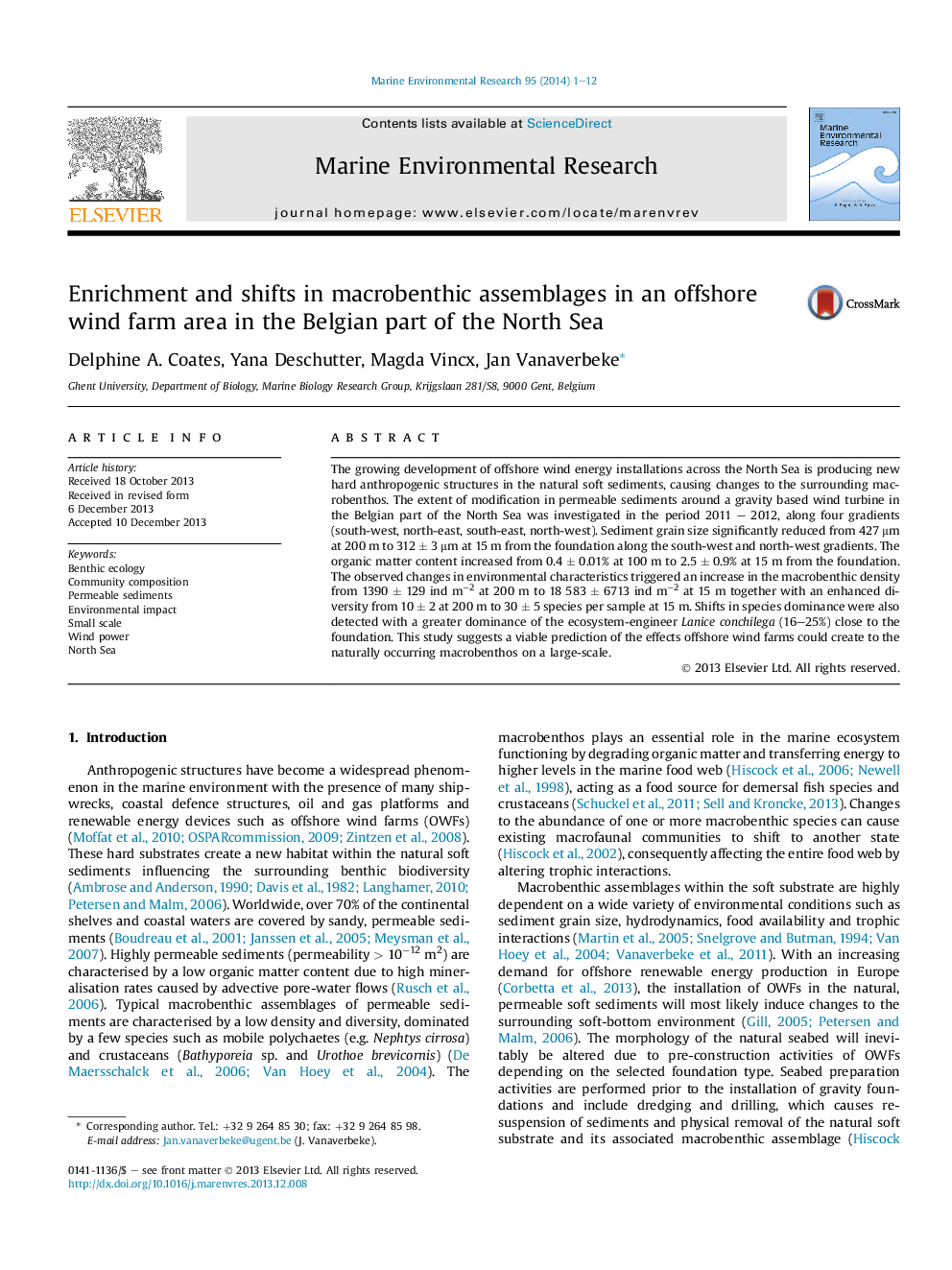| Article ID | Journal | Published Year | Pages | File Type |
|---|---|---|---|---|
| 4550827 | Marine Environmental Research | 2014 | 12 Pages |
•Enrichment of the macrobenthic assemblages close to an offshore wind turbine.•Shift to a young and heterogenic species community.•Increase in abundance of the ecosystem-engineer Lanice conchilega.•A high spatial variability of environmental and biotic variables was observed.
The growing development of offshore wind energy installations across the North Sea is producing new hard anthropogenic structures in the natural soft sediments, causing changes to the surrounding macrobenthos. The extent of modification in permeable sediments around a gravity based wind turbine in the Belgian part of the North Sea was investigated in the period 2011 – 2012, along four gradients (south-west, north-east, south-east, north-west). Sediment grain size significantly reduced from 427 μm at 200 m to 312 ± 3 μm at 15 m from the foundation along the south-west and north-west gradients. The organic matter content increased from 0.4 ± 0.01% at 100 m to 2.5 ± 0.9% at 15 m from the foundation. The observed changes in environmental characteristics triggered an increase in the macrobenthic density from 1390 ± 129 ind m−2 at 200 m to 18 583 ± 6713 ind m−2 at 15 m together with an enhanced diversity from 10 ± 2 at 200 m to 30 ± 5 species per sample at 15 m. Shifts in species dominance were also detected with a greater dominance of the ecosystem-engineer Lanice conchilega (16–25%) close to the foundation. This study suggests a viable prediction of the effects offshore wind farms could create to the naturally occurring macrobenthos on a large-scale.
Graphical abstractFigure optionsDownload full-size imageDownload as PowerPoint slide
